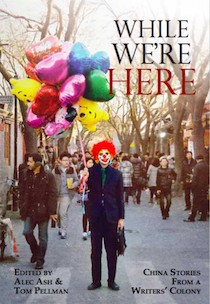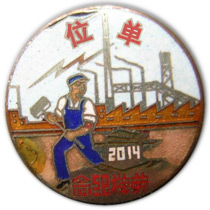The Good Earth
Pearl Buck, a country wedding, and how to cook pig guts
This spring festival, I read Pearl Buck’s 1931 novel The Good Earth in the perfect location – the farmlands of Anhui, where the book is set. (Read my LARB co-blogger Maura Cunningham’s take on the book here.)
Wang Lung, the protagonist, is a farmer who survives famine to strike it rich, eventually moving out of his old home on the land into a great house in town to establish his family in. The countryside of Anhui is no longer famine stricken, but is just about as poor, relative to the rich parts of China, now as then. An hour out of the nearest town (in this case Fuyang in the far northwest), you hit acres of maize fields and hamlets of unheated courtyard houses, still out of reach of paved roads.
So the land is still there – but the farmers are gone. It’s a familiar tale that over the last twenty years, urban migration has stripped the Chinese countryside of its able bodies, as they seek better paid work in the city. As one of them told me on the train to Shanghai, “Where there is money, that's where my dream is.” Wang Lung, for all his professed love of earth between his toes, would have followed them – as indeed he did in the harshest winter, boarding a “fire wagon” to a rich southern city to work as a rickshaw driver.
And as Wang added two new courtyards (and a concubine) to his home when he prospered, so too do many migrant workers today use their savings to knock up impressive houses in their old villages. Above is a picture of one – three stories with a big front gate, costing 30-40,000 RMB by one estimate. The construction is simple enough, and the inside is likely threadbare. It’s just for status. You build two stories, I build three, everyone can see how well I’ve done, and my son can impress potential wives with it.
For fifty weeks of the year, this house like those around it are all but empty. Only grandparents and children are left behind. Everyone else is eating bitterness in the cities, to put money under their mattress.
But over spring festival, the village comes alive again. Courtyards fill, families reunite, red wall hangings are strung, hay or coal-fired woks light up, bottles of rice wine and boxes of fireworks are heaped in the corner. Pigs are bought and ate whole – meat, trotter, lung, liver, heart, kidney, intenstines, face, ear and “bung”. Neighbours gamble over cards (one game is called “struggle against the landlord”) or Chinese dominoes, and try to find out how much each has earnt this year without asking. At night men smoke in a circle around a bag of gunpowder, pausing to stuff some in a fireworks stick, light the fuse with their cigarette and cover their ears.
It’s a fortnight of noise, food, booze, bangs and posturing. And then all that is left is to wish your neighbour gongxifacai (“good fortune in making money”), and leave the village and its land behind again, empty as before.
***
I was out on the land for a friend's wedding ceremony. A country wedding, it turns out, has little to do with marriage. Mostly, it's an excuse for the neighbours to get together for a big bash. Over 100 guests were crammed into the small dirt courtyard of my friend's ancestral home. Two pigs were killed for the occasion, along with buckets of fish, chicken, turtle, local veg, and more steamed buns (mantou) than you could count, especially after a bottle or ten of baijiu.
The fun started the day before, preparing this feast. Here are some pictures to give a flavour – and to serve as detailed instructions for how to cook pig insides, should the spirit ever move you.

Fig I: Prepare the field of battle. Giant coal-fired woks essential

Fig II: Cleanse your pig lungs of blood by stuffing a water hose in them

Fig III: Roll your pig trotters in hot sticky tar, then dip them in cold water and peel the hardened tar off, to get out the gristly furs

Fig IV: Boil the collected pig insides you prepared earlier (lungs, liver, kidney, heart, intenstines, face, ears – yes, those are pig ears – and bung)

Fig V: Lay on some entertainment, such as this portable karaoke lorry

Fig VI: Relax a little. Gamble on Chinese dominoes (paijiu). The pig can wait

Fig VII: When setting off fireworks, make sure the open bag of gunpowder is in easy reach of all the men smoking around it

Fig VIII: Bon appetit. And remember, banging a tin lid with a rope to make loud noises only adds to the fun while people eat

















